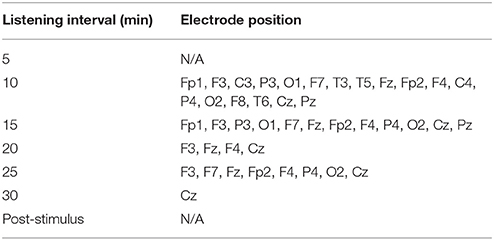
Let's say we take 180 Hz and send it to the left ear, and 186 Hz and send it to the right ear. To create binaural beats, we take two sound frequencies – within your hearing range – and send one to each ear. However, with the help of an EEG machine we can record the signals of brainwaves and print them as audio files.īut the result isn't very interesting, and sounds like nothing more than an unimpressive low frequency rumble ( 3). It would be horrible listening to all those vibrations cycling around in our head all day. Thing is, we can't listen to our own brainwaves. That said, if we had a binaural beat frequency of 25 Hz, we would be able to hear this.

Indeed, the science of binaural beats is actually an auditory illusion of sorts. The answer is that the resulting frequency, the binaural beat(s), is not something we hear. “How can my brain hear binaural beats at 6 Hz if humans can only hear above 20 Hz”? So it makes sense that people often ask something along the lines of: These frequencies are below the normal range of human hearing. Alpha and lower Beta waves are moderate wavesĪt the lower end of the spectrum we have Delta waves 1-4 Hz, and Theta 4-8 Hz, and Alpha waves 8-12 Hz.Delta and Theta waves are fairly slow waves.Brainwaves are produced by synchronized electrical pulses from masses of neurons communicating with each other ( 2). Brainwave Frequenciesīrainwaves are generally categorized into slow, moderate, and fast waves. But with good hearing you can still comfortably hear the bass down at 30 Hz and the percussion up at 10 KHz. Indeed, the bulk of the sound content your ears are most sensitive in music is in that 2,000 to 5,000 Hz range. Humans are most sensitive to frequencies in the 2,000-5,000 Hz range. It is possible that we have such acute hearing ability (in the higher ranges) at a young age to detect threats and cry/scream for protection from our parents/adults in the tribe. Surprisingly this decline starts at the early age of 8. However, in laboratory conditions a person may be able to hear sound as low as 12 Hz and as high as 28 Hz ( 1).Īs we age, our hearing diminishes.

Hearing ability varies from person to person, particularly in the higher frequency ranges. The human hearing range for most people falls in the commonly cited range of 20 Hz – 20 KHz. If you're still a little confused, let's look at this in further detail. Subsequently, the brain produces brainwaves at 6 Hz (cycles per second). The brain is interpreting this frequency as a result of hearing the sound frequencies sent to the left and right ears. If we refer to a 6 Hz binaural beat, our ears aren't actually hearing this frequency. With brainwave entrainment music, brainwaves are not stimulated by the pitch (the sound), but by the frequency of the beat/tone that is how often it cycles/vibrates per second.

The human hearing range of 20-20,000 Hz refers to the sound you hear, the ‘pitch frequency'.


 0 kommentar(er)
0 kommentar(er)
